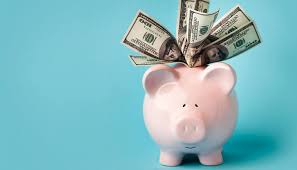The Federal Reserve Lowered Rates. How Does This Affect Business Loans?
 With December’s Federal Reserve meeting seeing a rate cut of 25 basis points, interest rates on business loans and lines of credit will follow, making it cheaper and easier for businesses to borrow money.
With December’s Federal Reserve meeting seeing a rate cut of 25 basis points, interest rates on business loans and lines of credit will follow, making it cheaper and easier for businesses to borrow money.
With the drop in borrowing costs, the Fed’s cuts can have a broader impact on businesses, encouraging more economic activity, boosting the job market and stimulating business growth, while balancing the need to keep inflation in check.
However, the Fed has indicated that rate cuts may come at a slower pace in 2025. This means that borrowing rates may stay the same for the foreseeable future.
How The Federal Reserve Affects Business Loans
The Fed’s interest rate sets the base rate that lenders offer to businesses for their loans. As the Federal Reserve interest rate increases or decreases, so do the APR and factor rate for business loans and lines of credit.
For business loans pegged to the prime rate, and especially variable rate loans, there is a direct connection between the Federal Reserve cutting interest rates and the subsequent decline in rates that business borrowers.This is one of the ways the Federal Reserve can influence economic activity. Lower rates mean businesses can borrow more, expand more and hire more people. High rates, on the other hand, can help restrict the supply of money businesses and consumers have access to.
Borrowing Costs
The interest rate of a business loan or business line of credit plays a large role in how much a business will pay for borrowing.
In July 2024, the average fixed APR for an SBA loan was 13.50 percent on the lower end. Therefore, a 15-year SBA loan of $300,000 would come with a monthly payment of $3,894.96. It would also have $401,092.01 of interest paid in addition to the loan’s principal.
A reduction of APR of just .25 percent makes a sizable difference in interest paid. The same $300,000 15-year SBA with a rate of 13.25% would require a monthly payment of $3,845.21. It cost you an interest total of $392,137.67. This is nearly $9,000 less over the lifetime of the loan.
Fixed and Variable-Rate Business Loans
The federal interest rate sets the interest rates for both fixed and variable business loans. Yet, the impact to borrowers is felt in different ways.
For example, new borrowers of fixed-rate business loans will feel the impact of the rate with the APR, factor, monthly or weekly fee they’re offered.
Variable-rate business loans will have the interest rate with the market rate. This means that borrowers may see their monthly or weekly payment change with the federal rate.
Refinancing and Consolidation
Borrowers who decide to refinance will see changes to their loan terms in line with the federal rate.
Refinancing when the federal rate decreases can allow borrowers to take advantage of a lower market rate. This could lead to possibly lowering their payments and how much interest they pay over time.
Business Loan Approval
A lower federal interest rate can increase the odds of business loan approval, since the borrower will take on less in borrowing costs.
With a lower interest rate, the monthly or weekly payment will be lower, making the loan less risky for the borrower and lender than a loan with a high interest rate.
Lower interest rates can also allow businesses to borrow more. Less of the monthly or weekly payment is dedicated to interest, allowing businesses to take on a larger loan while keeping the same payments.